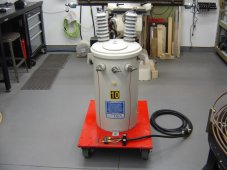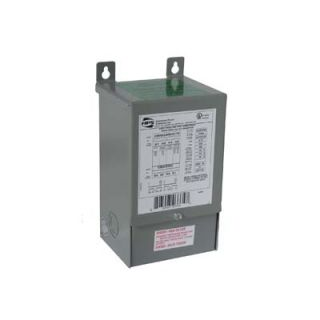AlaskanNoob
Solar Enthusiast
- Joined
- Feb 20, 2021
- Messages
- 903
Hello DIY Solar folks,
I'm MrsAlaskanNoob, borrowing his account. You may be familiar with AlaskanNoob's trials and tribulations trying to plan our system here:

 diysolarforum.com
diysolarforum.com
Before we go with some really high number of wires, in a system that is getting crazy expensive, I'd like to reopen the design and make sure we're thinking through this correctly. We have been so grateful for the info folks on this forum have provided, given that we know very little about what we are doing. (Yes, I recognize that is not ideal). Thank you in advance for any thoughts you may be able to share on this question: If the solar array is 500 feet from the house, and we choose to place the inverter at the solar array, how can we best do that in a way that avoids (or mitigates) a crazy expensive wire cost? Details about constraints and design follow.
The following items are un-changeble constraints (because of reality on the ground/things we've already bought):
1. Panels are 50 x LG440N2T-E6 Bifacial Solar Panels (https://s3.amazonaws.com/ecodirect_docs/LG/2021/LG440N2T-E6/LG440N2T-E6-DataSheet.pdf)
Nominally a 22KW array
Based on my understanding of what we've learned from this forum (thank you!) volt/amp specs per panel are: 46 Voc (56.58 temp corrected) and 10.23 Isc
2. Distance from array to cabin is 500 feet. Can't be helped.
3. Batteries are 8 x Pylontech US5000 48V/100AH LifePo4 batteries
4. Generator for backup power is Honda eu7000is
5. At the cabin, overall demand assuming a bunch of things on at one time is maybe about 15.2kw (heat pump and water heater are largest components of this). We need at least one 240v circuit for the ground source heat pump (3kw demand) and another one for associated water heater (1.6kw demand from the heat pump and 4.5kw max demand for aux heat). Possibly a third 240v circuit for an appliance (e.g., combined/washer dryer) (say 2kw demand). If I had my druthers, there'd also be an oven (also 240v, 2.5kw) but the reality is we're probably getting beyond what we could do, and likely wouldn't be using these things at same time (save for the heat pump/water heater). In future, possibly a fourth 240v circuit for charging electric ATVs. Everything else on 110/120v.
AlaskanNoob had planned everything with Victron inverter and charge controllers, etc., but I'm reopening that. How we wire the panels together (e.g., how many per string) is also open to change. Assume we have decided to put the batteries, charge controllers, inverter etc. near the panels, and are running AC power the 500 feet between that location and the cabin. I gather with a 'normal' split phase inverter, such as we might have if the panels were right next to the cabin, the output of the inverter would be 2 live 120v wires, a neutral, and a ground. But if we put such an inverter 500 ft away, I think the (relatively) low voltage on each of those two lines would drive extremely big (expensive) wires. So the question is, any thoughts on equipment/design to run AC power across that distance? Invert it to single-phase 240v and step it up to 480 before running it (meaning one live wire and a neutral?) the distance, then step it back down to 240 and split it to two 120v lines plus neutral by the cabin? Other approaches?
(I recognize running DC power from the solar array all the way to the cabin and then putting batteries/charge controller/inverter/etc at the cabin is an alternate approach, but I'm trying to figure out what an AC solution might look like, because having the equipment at the array will make it easier for us to distribute power to other parts of the property in future).
Thank you for any guidance!
I'm MrsAlaskanNoob, borrowing his account. You may be familiar with AlaskanNoob's trials and tribulations trying to plan our system here:

About to spend a lot of money tomorrow on this system (am I making a mistake?)
Planning on buying the bolded * items tomorrow for our completely off grid homestead. Big purchase for us! Just posting this in case somebody sees something glaring with our mix of components who might sound the alarm and prevent me from making a costly mistake. I'm showing the 22KW ground...
Before we go with some really high number of wires, in a system that is getting crazy expensive, I'd like to reopen the design and make sure we're thinking through this correctly. We have been so grateful for the info folks on this forum have provided, given that we know very little about what we are doing. (Yes, I recognize that is not ideal). Thank you in advance for any thoughts you may be able to share on this question: If the solar array is 500 feet from the house, and we choose to place the inverter at the solar array, how can we best do that in a way that avoids (or mitigates) a crazy expensive wire cost? Details about constraints and design follow.
The following items are un-changeble constraints (because of reality on the ground/things we've already bought):
1. Panels are 50 x LG440N2T-E6 Bifacial Solar Panels (https://s3.amazonaws.com/ecodirect_docs/LG/2021/LG440N2T-E6/LG440N2T-E6-DataSheet.pdf)
Nominally a 22KW array
Based on my understanding of what we've learned from this forum (thank you!) volt/amp specs per panel are: 46 Voc (56.58 temp corrected) and 10.23 Isc
2. Distance from array to cabin is 500 feet. Can't be helped.
3. Batteries are 8 x Pylontech US5000 48V/100AH LifePo4 batteries
4. Generator for backup power is Honda eu7000is
5. At the cabin, overall demand assuming a bunch of things on at one time is maybe about 15.2kw (heat pump and water heater are largest components of this). We need at least one 240v circuit for the ground source heat pump (3kw demand) and another one for associated water heater (1.6kw demand from the heat pump and 4.5kw max demand for aux heat). Possibly a third 240v circuit for an appliance (e.g., combined/washer dryer) (say 2kw demand). If I had my druthers, there'd also be an oven (also 240v, 2.5kw) but the reality is we're probably getting beyond what we could do, and likely wouldn't be using these things at same time (save for the heat pump/water heater). In future, possibly a fourth 240v circuit for charging electric ATVs. Everything else on 110/120v.
AlaskanNoob had planned everything with Victron inverter and charge controllers, etc., but I'm reopening that. How we wire the panels together (e.g., how many per string) is also open to change. Assume we have decided to put the batteries, charge controllers, inverter etc. near the panels, and are running AC power the 500 feet between that location and the cabin. I gather with a 'normal' split phase inverter, such as we might have if the panels were right next to the cabin, the output of the inverter would be 2 live 120v wires, a neutral, and a ground. But if we put such an inverter 500 ft away, I think the (relatively) low voltage on each of those two lines would drive extremely big (expensive) wires. So the question is, any thoughts on equipment/design to run AC power across that distance? Invert it to single-phase 240v and step it up to 480 before running it (meaning one live wire and a neutral?) the distance, then step it back down to 240 and split it to two 120v lines plus neutral by the cabin? Other approaches?
(I recognize running DC power from the solar array all the way to the cabin and then putting batteries/charge controller/inverter/etc at the cabin is an alternate approach, but I'm trying to figure out what an AC solution might look like, because having the equipment at the array will make it easier for us to distribute power to other parts of the property in future).
Thank you for any guidance!
Last edited:





